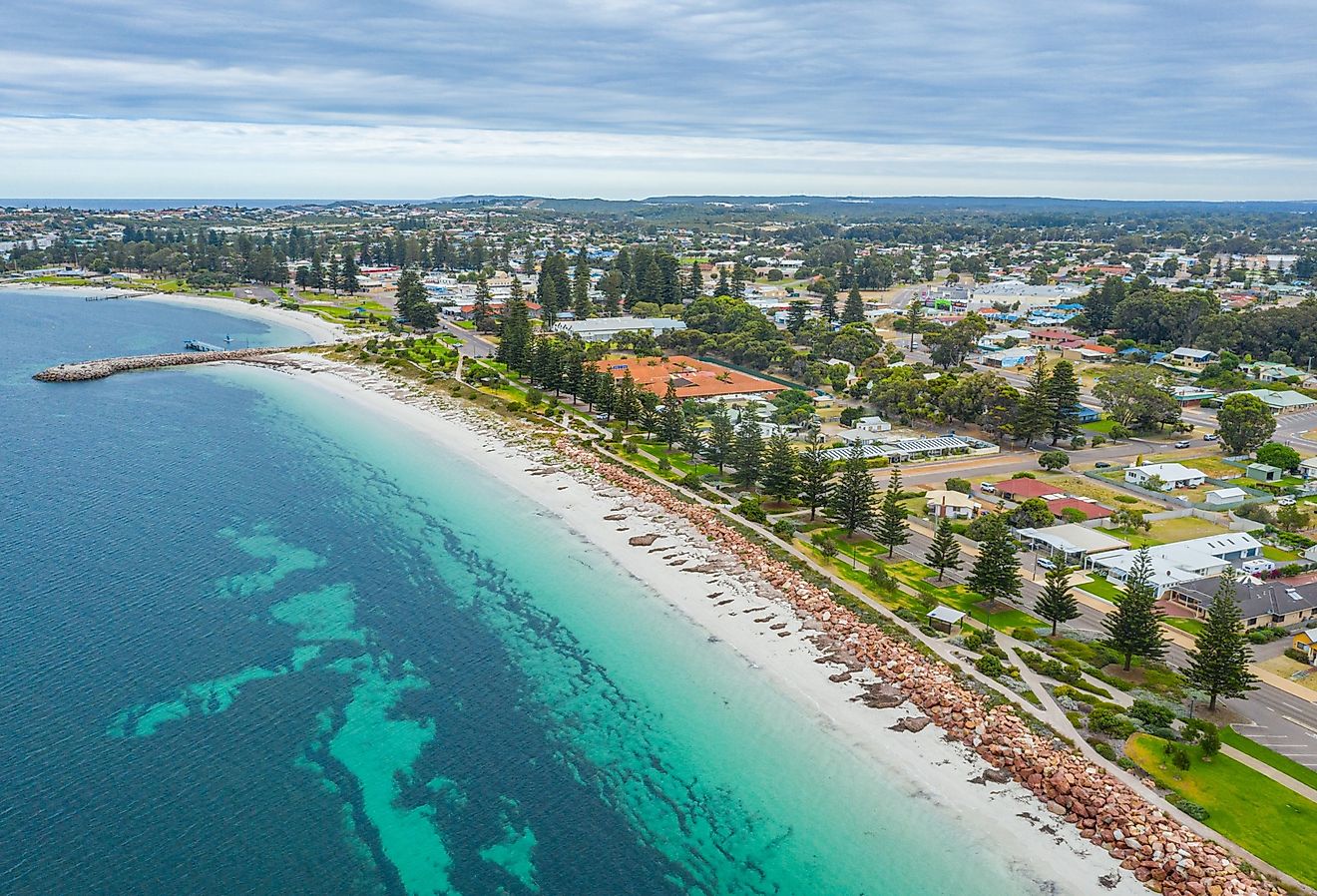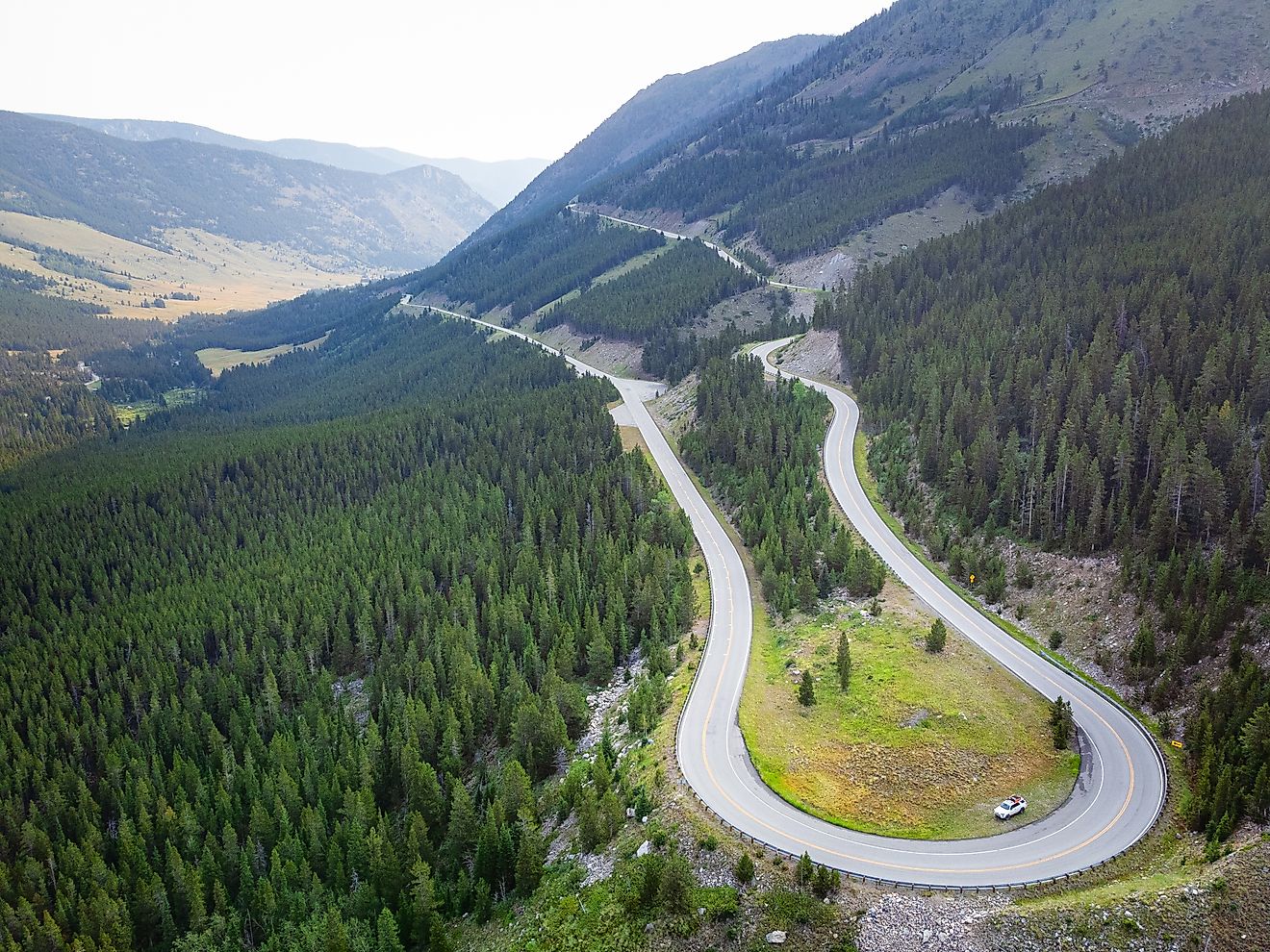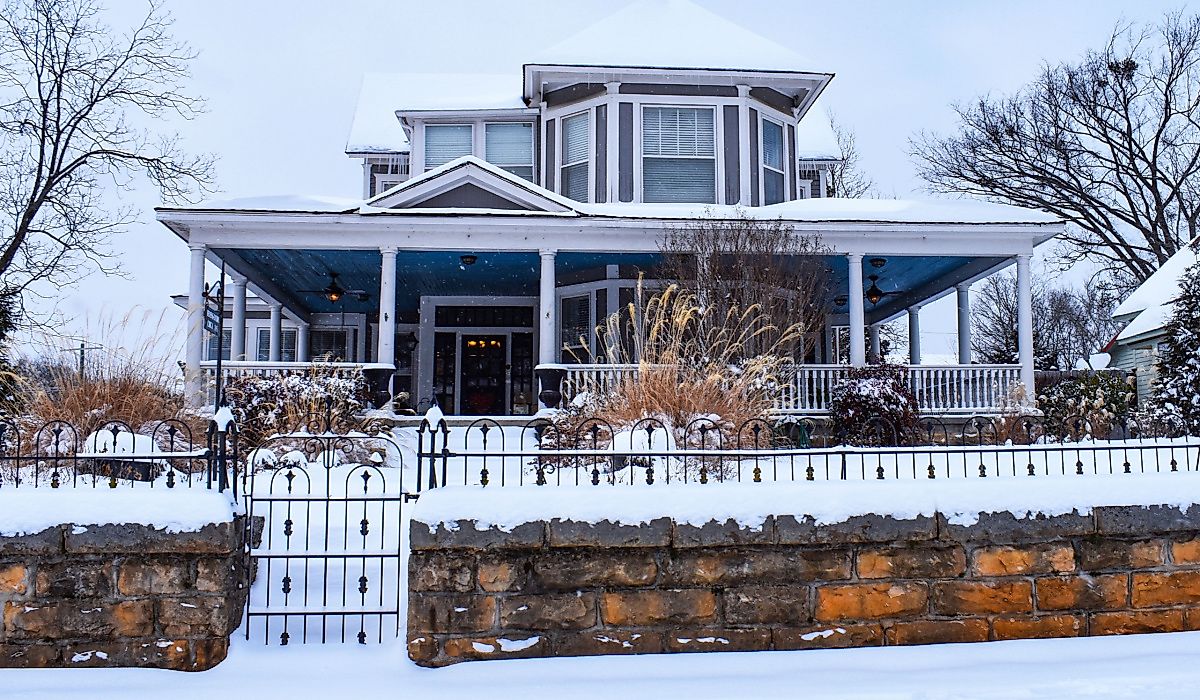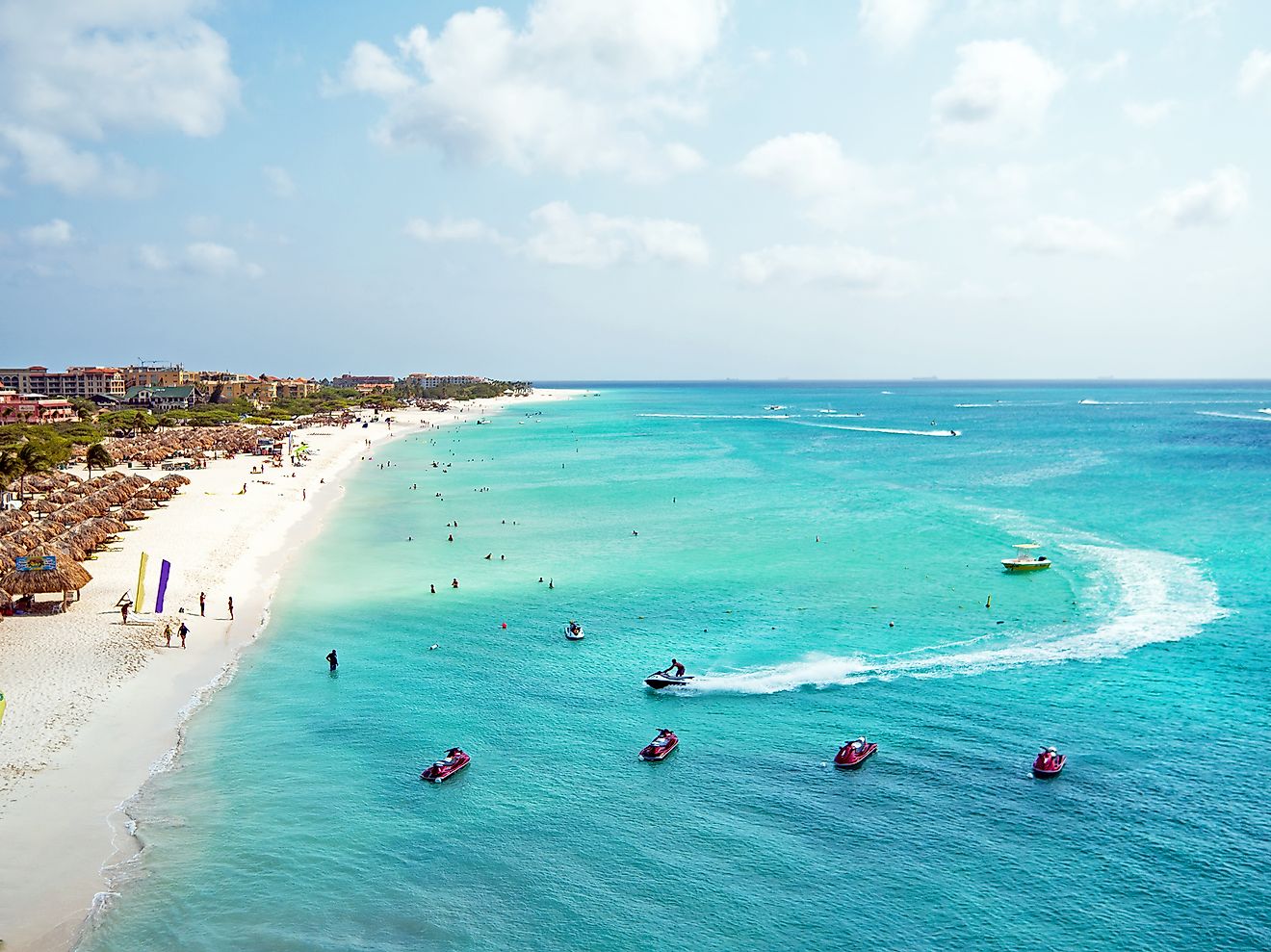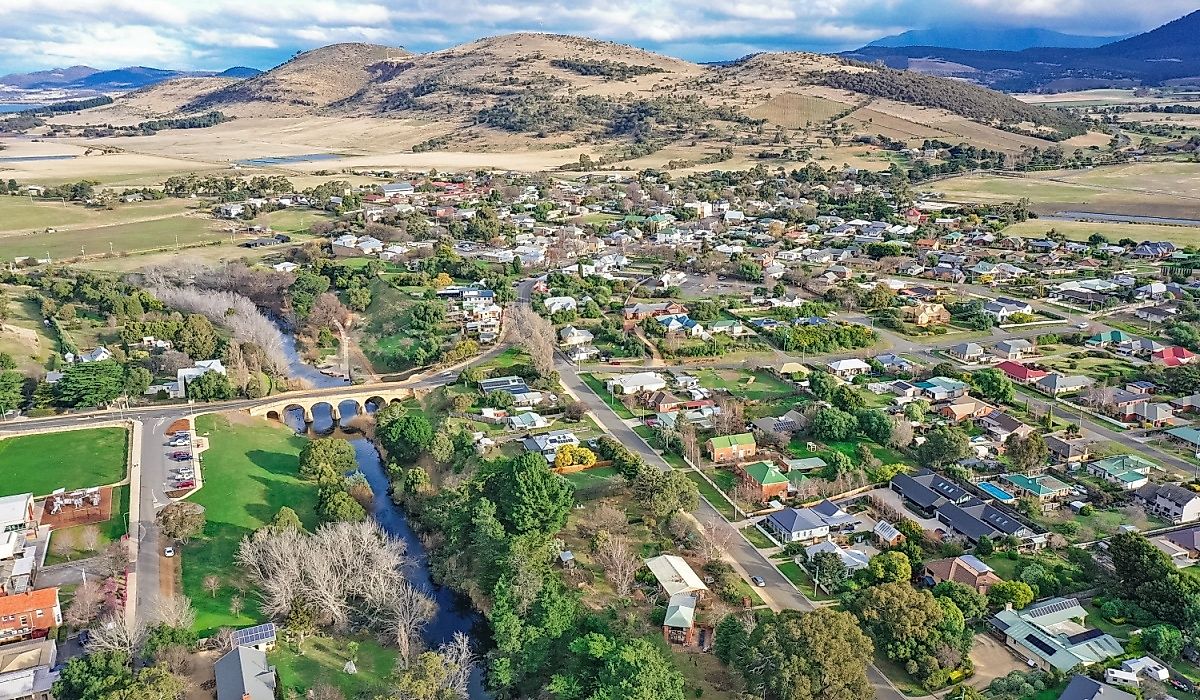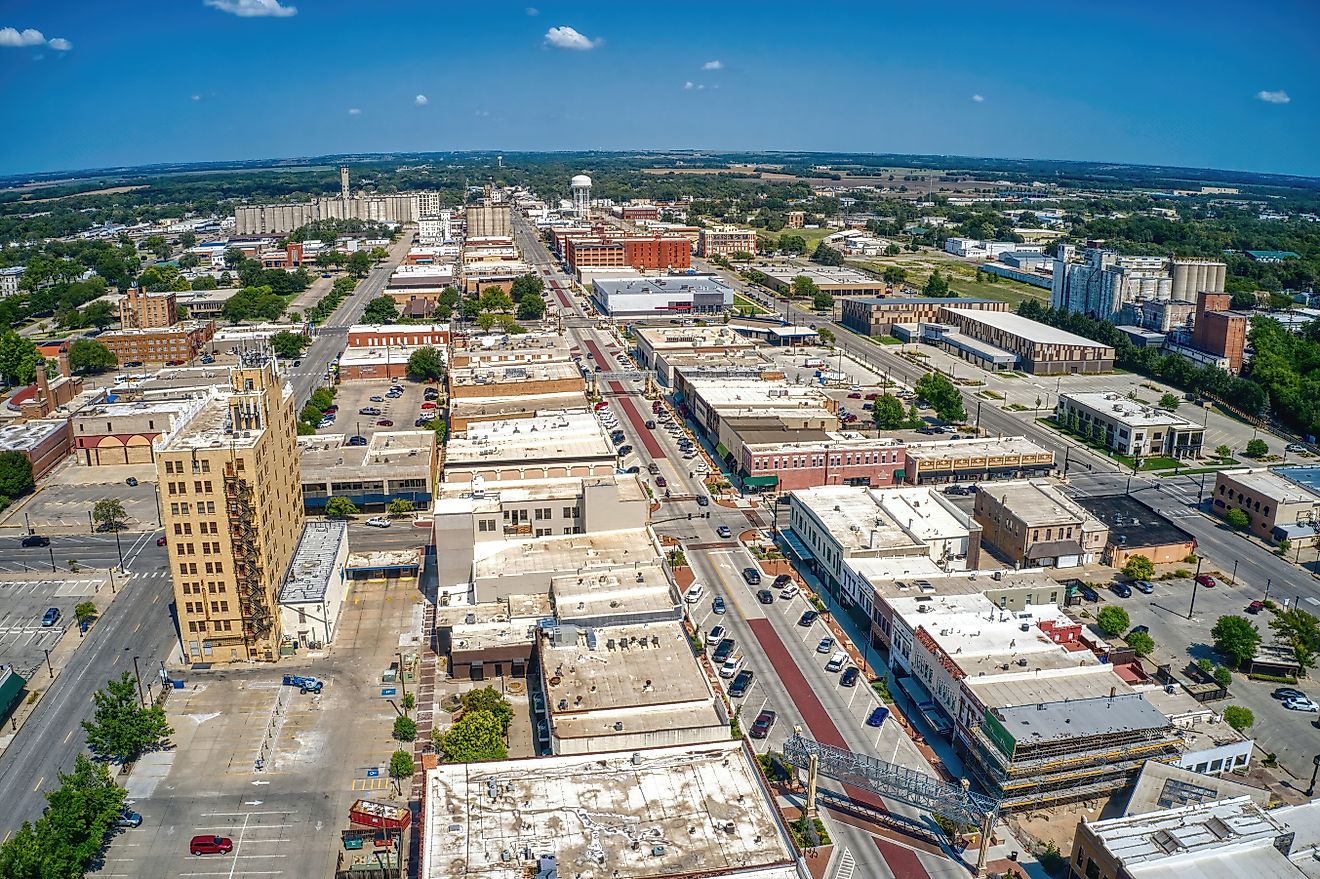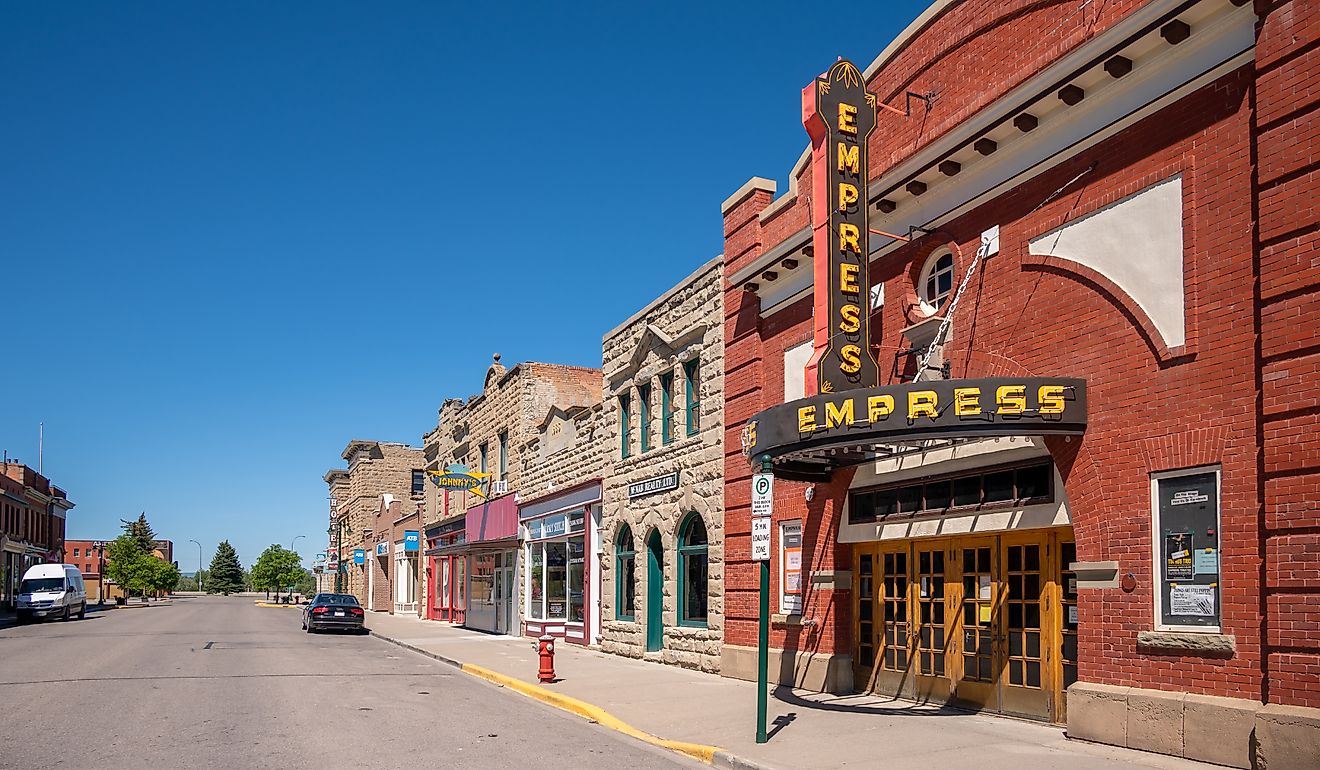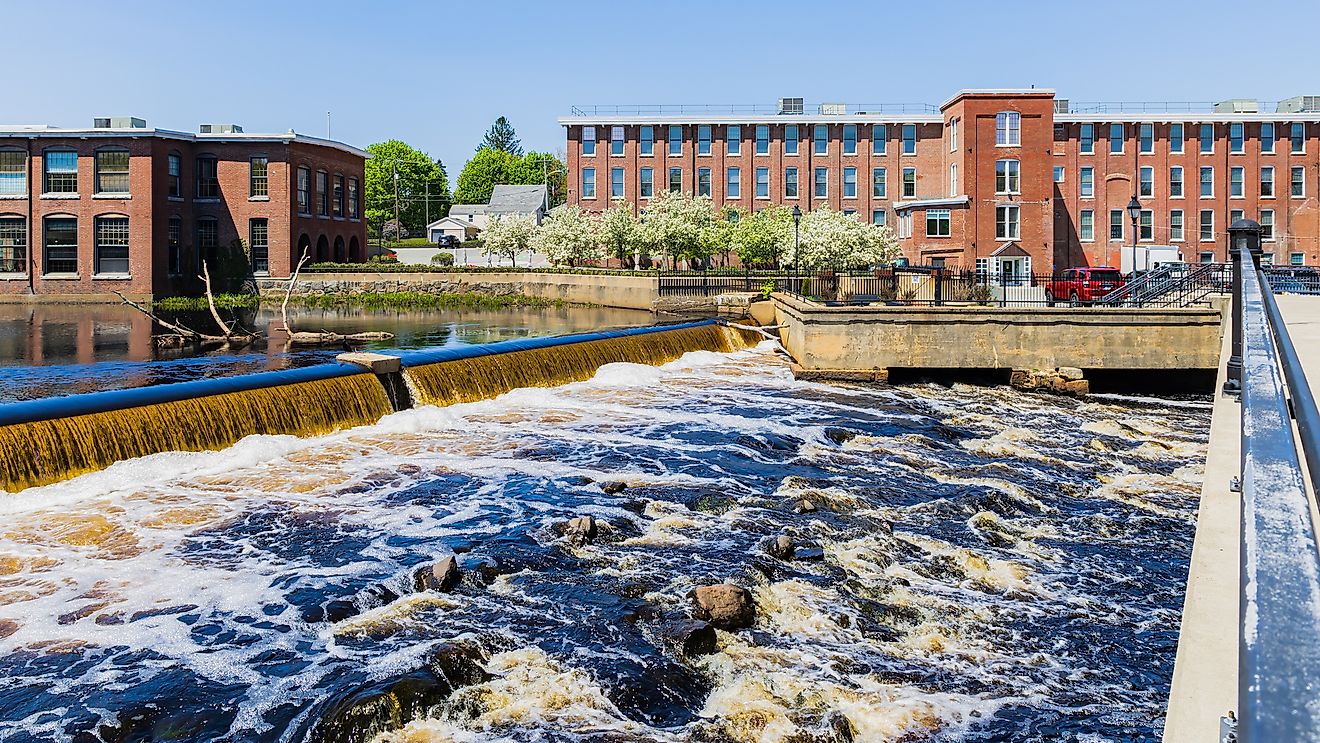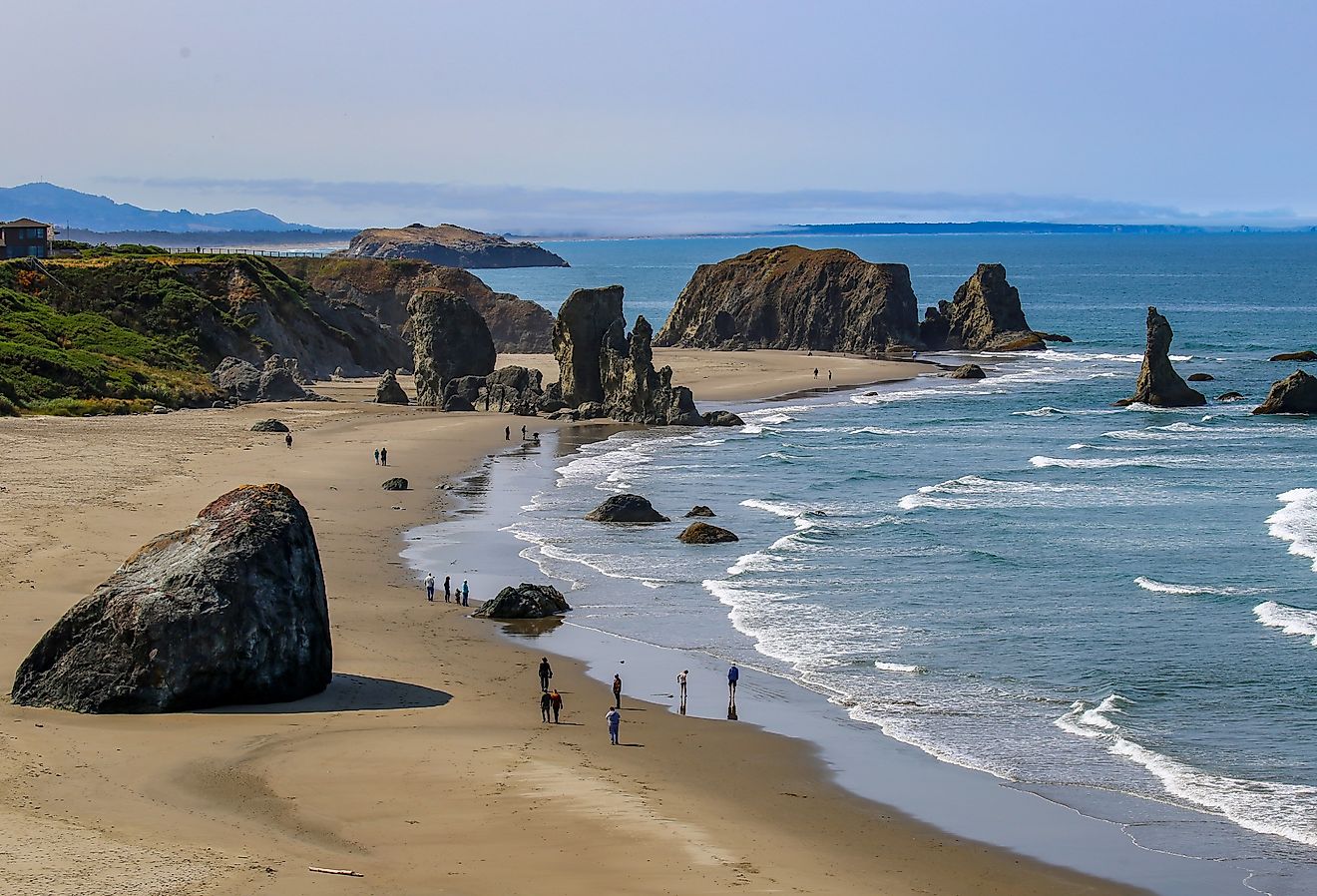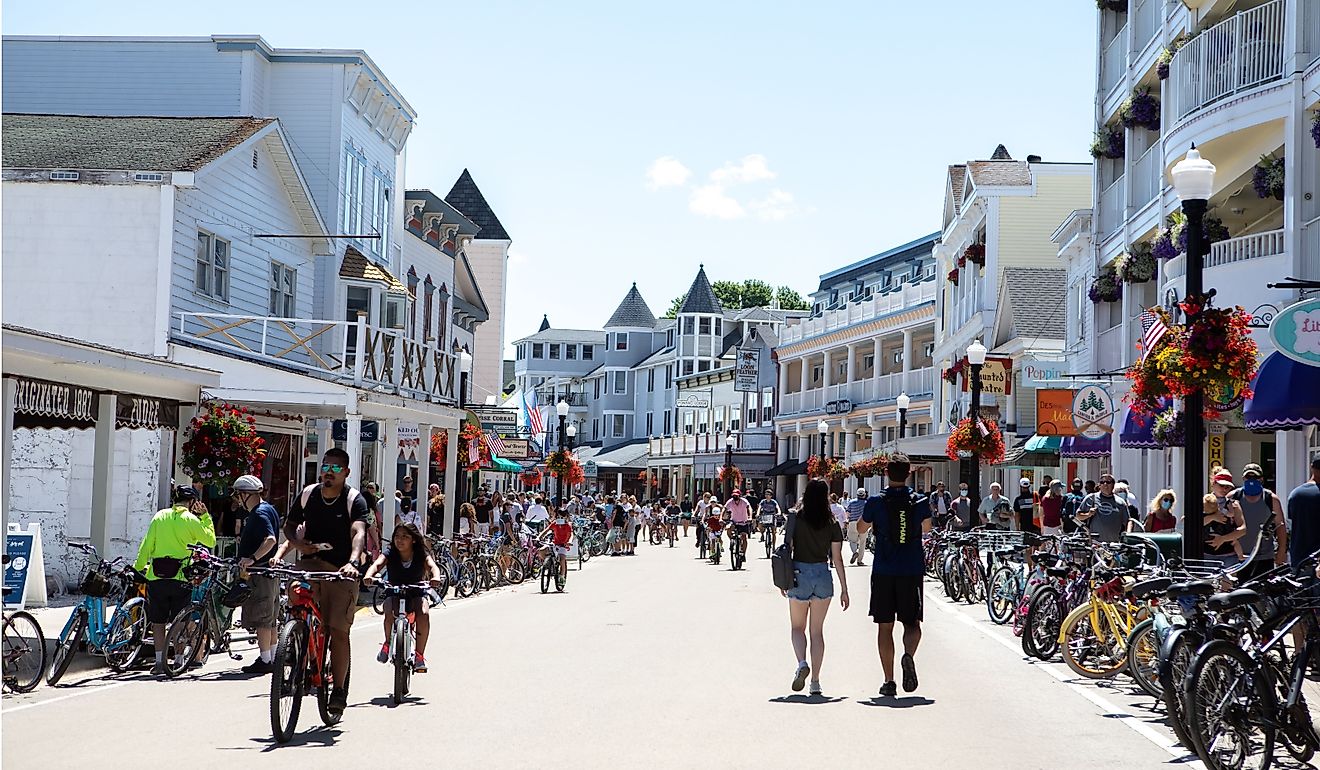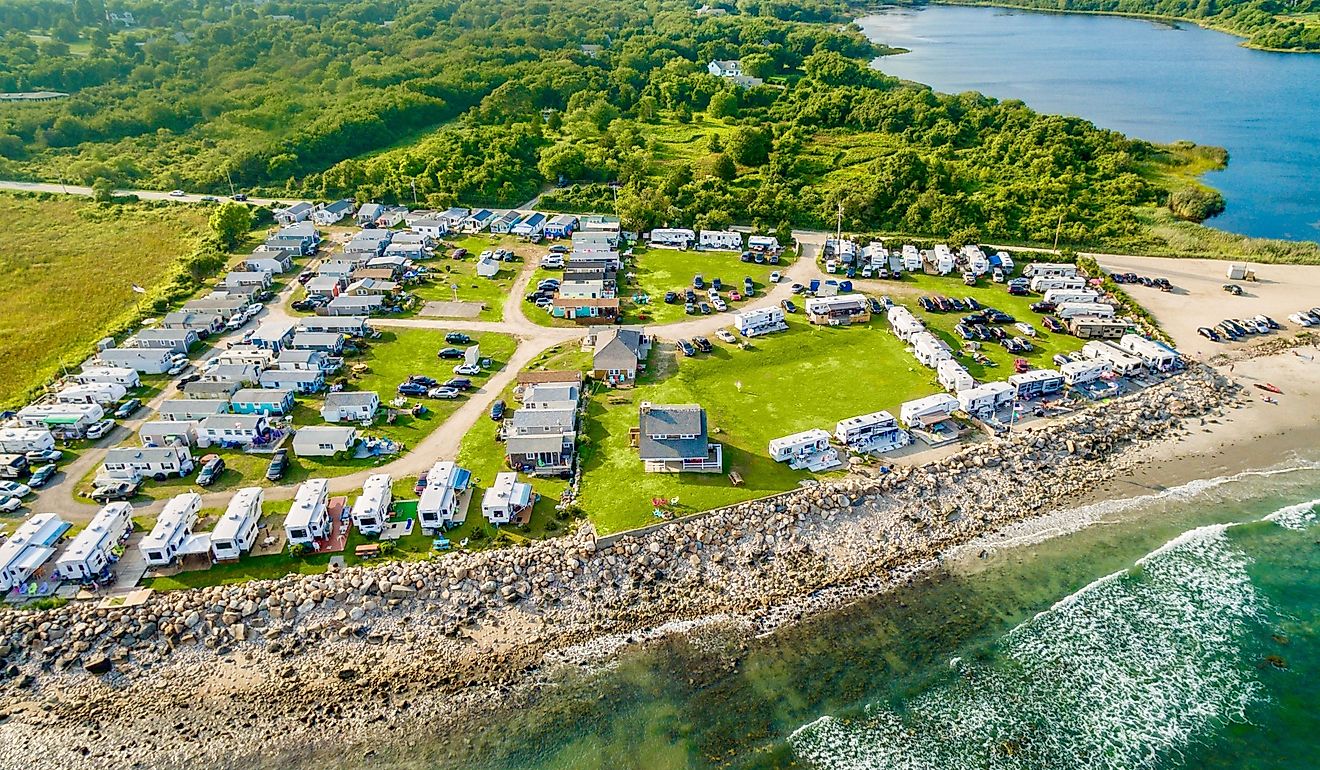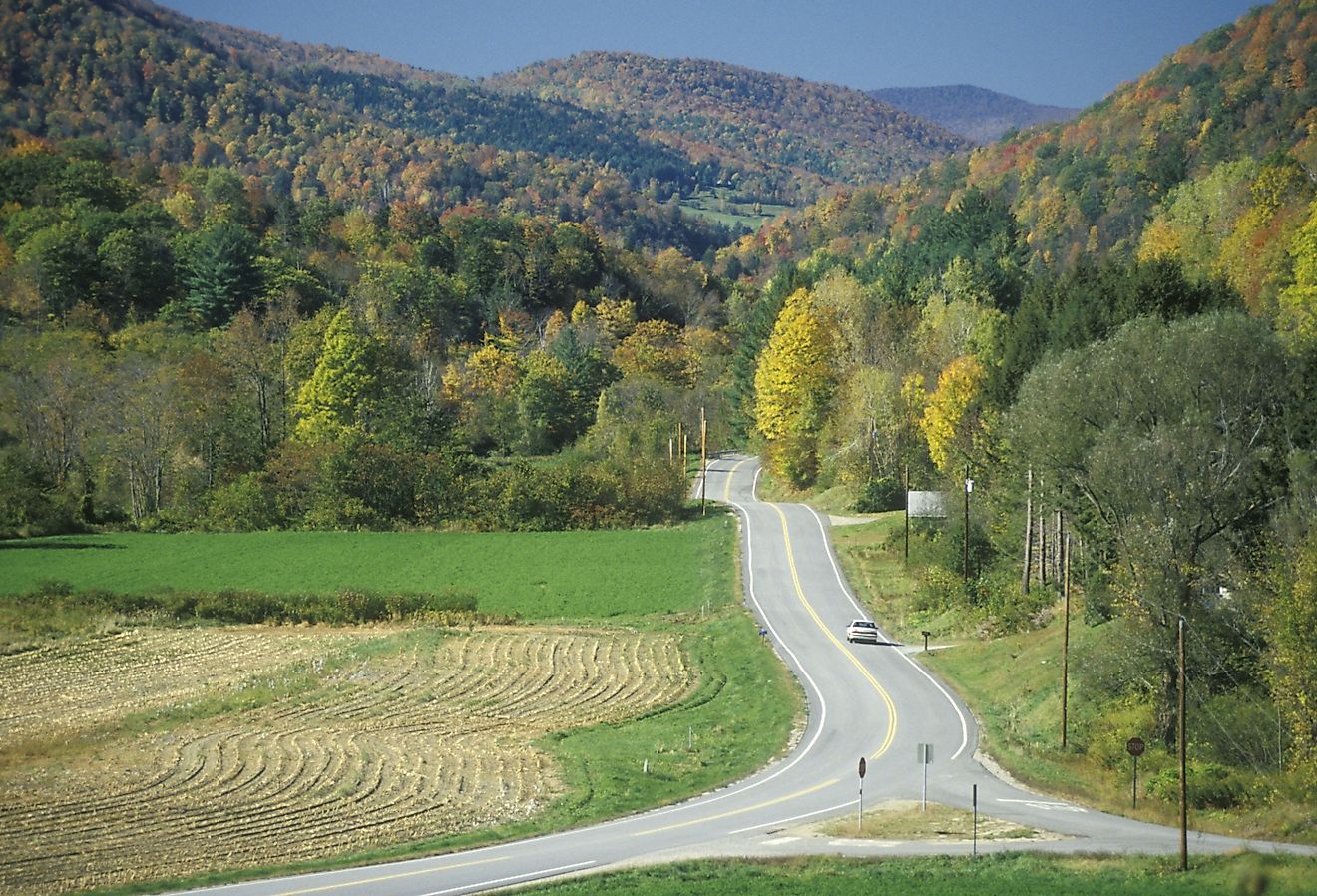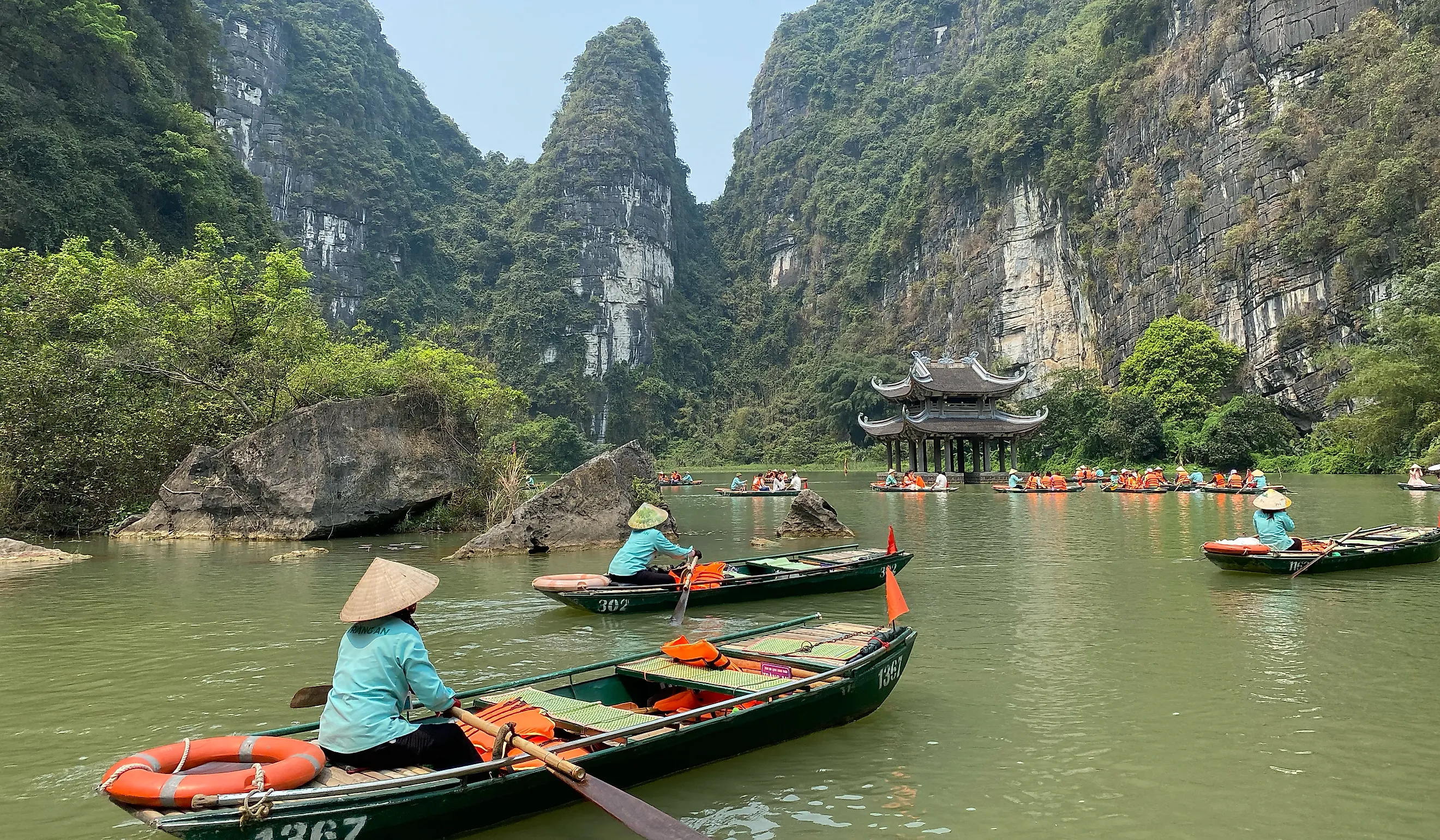
The Highs and Lows of Vietnam Travel
Backpacking Vietnam is to explore not only an intriguing part of Southeast Asia, but the highs and lows of one's emotions, and humanity as a whole. Dizzying megacities give way to rural rice fields, which in turn transform into arresting karst landscapes. Hordes of honking motorcycles in the morning are contrasted by mountaintop temples and World Heritage cave systems in the afternoon. Likewise, indelible scars from the American War are disguised by beaming smiles and clinking glasses (một, hai, ba, yo!).
Vietnam is beautiful and dirty; tranquil and intimidating; energizing and exhausting - a culture shock on par with few other places, but a magnet for Western travellers in spite of this (or perhaps because of it). Over the course of a month, I had the chance to travel from the center of this eclectic nation all the way to the top; by plane, train, "limousine" shuttle, traditional row boat, and on foot. What a memorable, albeit mixed bag, experience it turned out to be. Here are some of the highlights (and lowlights).
Da Nang
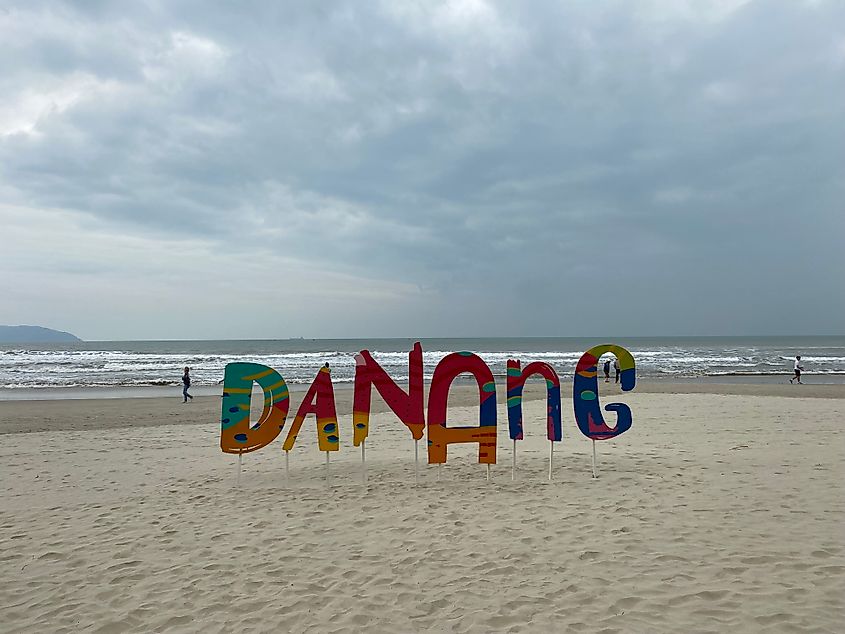
Having just completed a circuit of Northern Thailand, I hopped a direct Thai AirAsia flight over to Da Nang, Vietnam - a coastal city smack dab in the middle of the long, slender country. The first challenge was calibrating the massively inflated currency. Nervously, I selected the ATM option for 10 million Vietnamese Dong (VND), which ended up being a little less than $400 USD. A brief and exceptionally cheap Grab ride (i.e., the local equivalent of Uber) took me over the illuminated Dragon Bridge (which blows fire on the weekends) to my beachside hotel on the East Vietnam Sea (congruous with the South China Sea). The southern half of this extensive sandy stretch was dedicated to sunseeking tourism, evening parties, and stock commercialism, whereas the northern half was characterized by garbage and has-been (or never-was) resorts. Way off in the distance, the all-white visage of the tallest Lady Buddha (aka Goddess of Mercy) statue in Vietnam restores balance from the tip of the Son Tra Peninsula.
Ba Na Hills
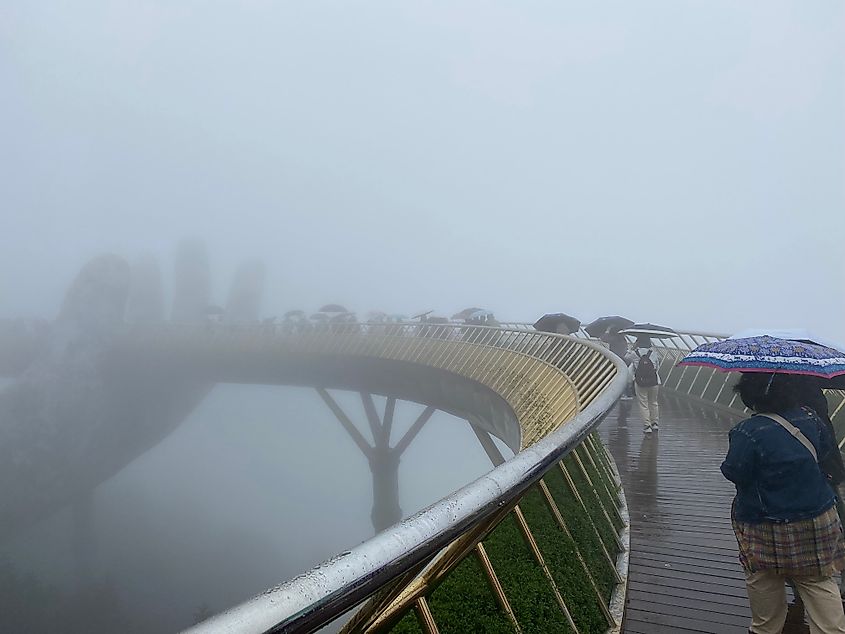
An hour outside of Da Nang, sitting atop the Bà Nà Hills (at an elevation of 1,487 meters above sea level), Sun World harbors jaw-dropping panoramic views of the verdant coastal mountains. Well, that's what's supposed to happen anyway, but my friends and I were met with a dense blanket of cold fog that refused to lift until we boarded the chairlift back down, some seven hours later. Nonetheless, the rides, castles, temples, restaurants, brewery, and even subterranean wine cellar of this, the most substantial amusement park in all of Vietnam, kept us busy and plenty satisfied. Besides, the moody weather complemented the mysterious mountaintop setting.
Hue
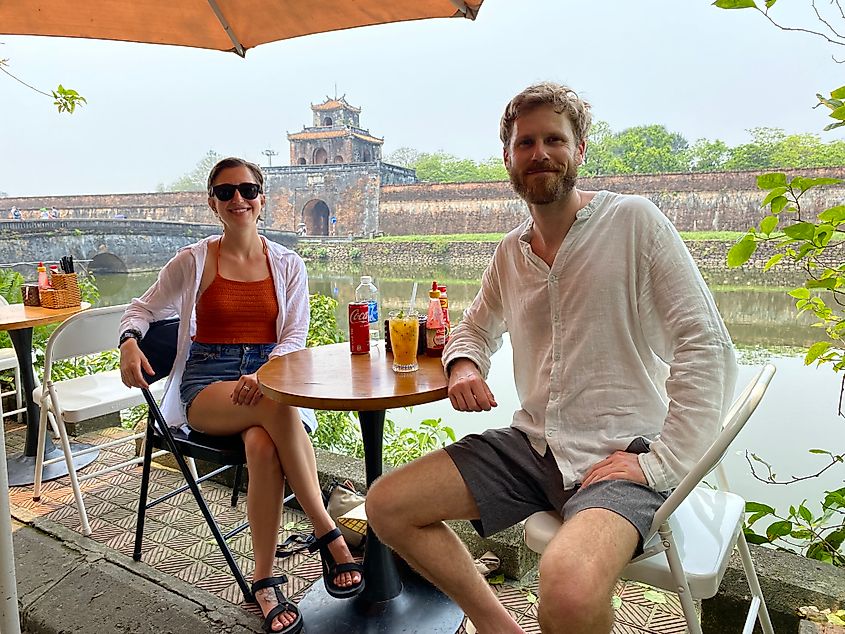
I found my way to the ancient capital of Hue thanks to Anthony Bourdain's adventures in Parts Unknown. Judging by the surge of pale backpackers, I wasn't the only Westerner inspired to do so. As such, the first thing I noticed compared to Da Nang and Dong Hoi (coming up next) was the increase in transactional interactions. People will come up to you on the street, or approach your table, unsolicited, to try and rent you a scooter, or sell you on their personal tour. They'll start by asking where you're from, and then open a hand-written journal with Trip Advisor-style scribblings from your fellow countrymen who committed to the proposed itinerary. I have no doubt these are legitimate (probably more so than Google now that all those AI reviews are out there), and that you'll have a fruitful excursion, should you sign up, but just know that one way or another, you're going to get buttered up a bit more in Hue. Heck, even our waitress tried to sell us on her husband's cocktail bar and their private street food tour (the former of which I heeded, the latter I did not).
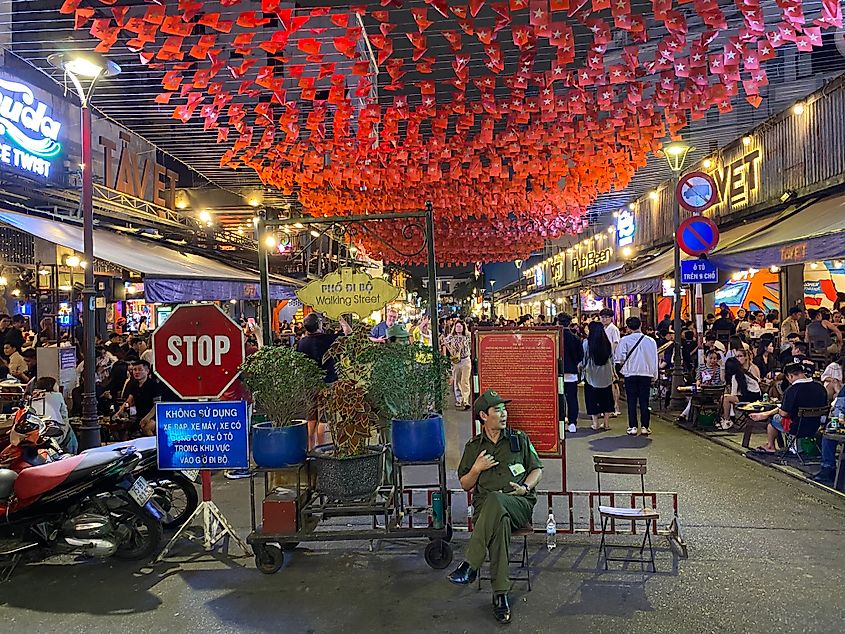
Tourist traps aside, the more you explore Hue, the more textured it becomes. Walking the Perfume River reveals low-key local joints, parks, and markets, as well as the glorious Imperial City - one of Vietnam's many UNESCO World Heritage Sites and former heart of the Nguyen dynasty. At night, Hue's commercial core, but especially the Pho Di Bo Walking Street, erupts in the best possible way. Here, fresh-faced foreigners rub elbows with seasoned locals in streetside eateries, fancy restaurants, and everything in between. At one point, a group of kids even broke out a soccer game in the middle of the pedestrian strip.
A Note on the Air Quality:
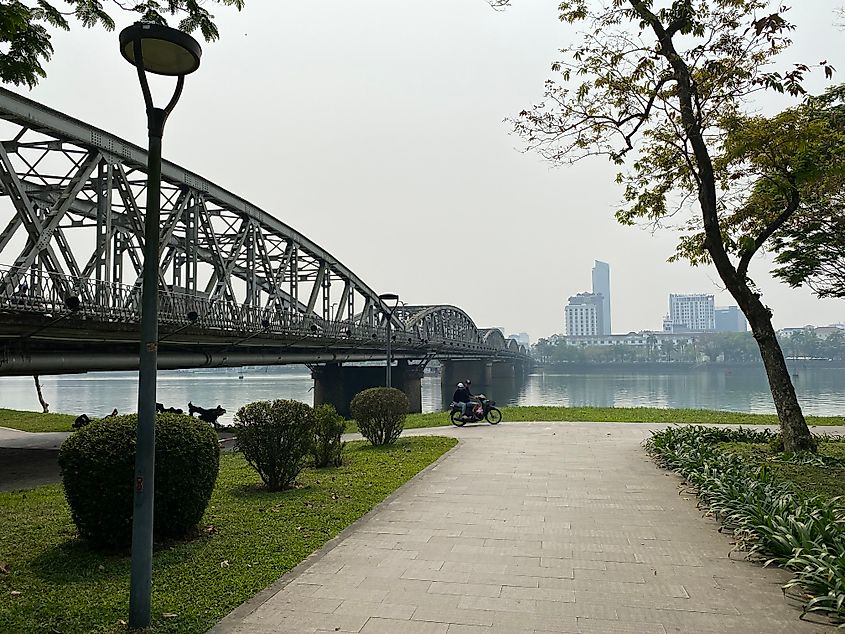
Before we move on, it needs to be mentioned that Vietnam's rampant pollution issues first revealed themselves to me in Hue. A combination of steady traffic, heavy industrialization, and seasonal crop burning (something I had previously encountered in Northern Thailand) means that a haze of lung-congesting, eye-irritating particulates hangs over not just Hue, but much of the country. Some days are better than others, and the monsoon season is generally healthier than the traveller-preferred dry seasons, but no matter what, excess air pollution is something that everyone has to contend with in Vietnam.
Vinh Moc Tunnels
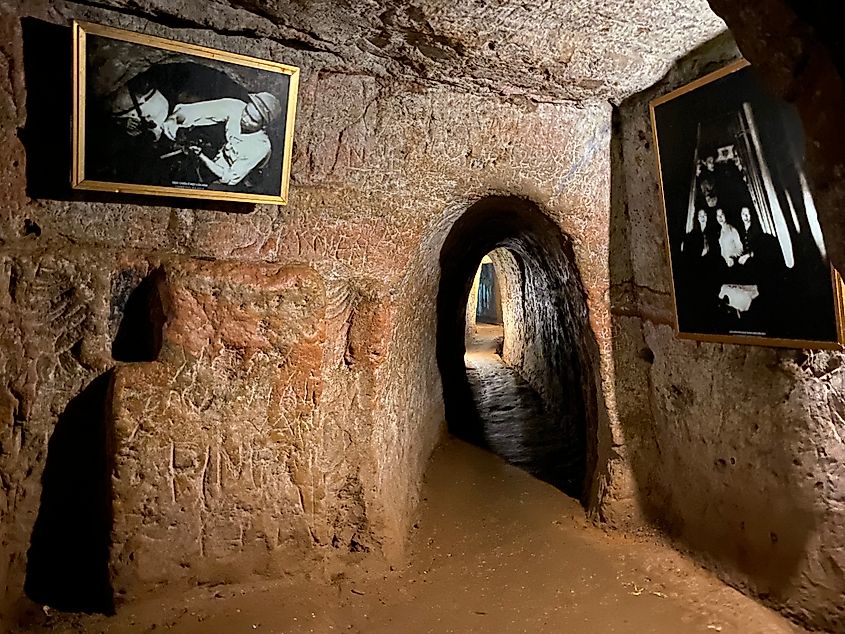
No trip to Vietnam would be complete without paying homage to the Vietnam War, or as they call it over there (unsurprisingly), the American War. The place that put it all into perspective for me was the Vinh Moc Tunnel system just north of the Demilitarized Zone (DMZ). In a frantic effort to shelter from the relentless American aerial bombings, and to hold onto their homeland, the villagers of the Vinh Linh District dug out an intricate network of tunnels, not only branching off to 13 strategic entrance/exit points, but overlapping in three distinct layers, with the third level descending 23 meters into the dense clay. For varying intervals over the span of seven years, hundreds of people took refuge in these dark corridors. In fact, 17 babies were born beneath Vinh Moc.
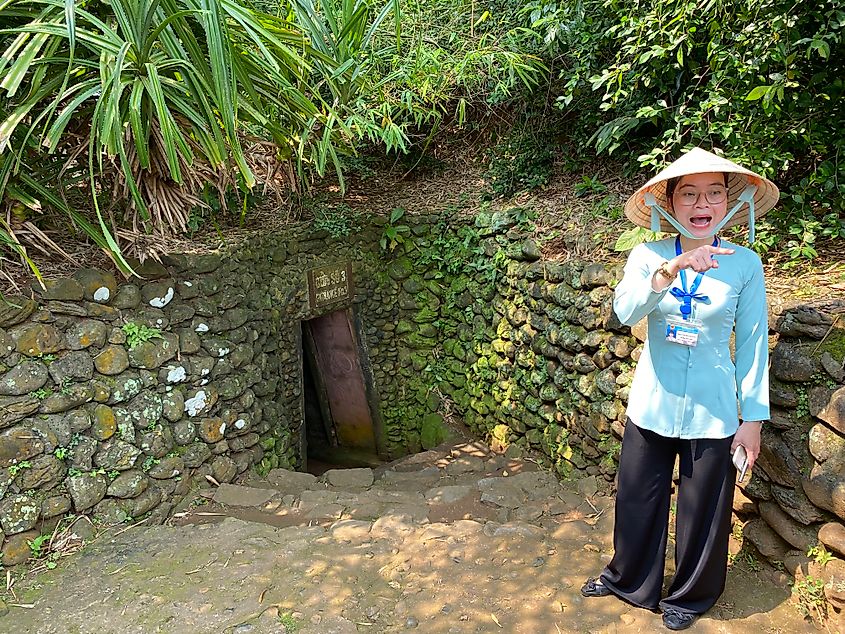
The region's somber history was offset by our tour guide's bubbly personality. She did an excellent job conveying the facts and showing the small group around the subterranean attraction without ever bogging down the morale. Half a century on (nearly to the day, as of the writing of this article), the people of Vietnam seem to have digested these atrocities and recognize that modern-day tourists not only had nothing to do with it, but in most cases, completely sympathize with the past plights of the Vietnamese soldiers and civilians alike.
Dong Hoi
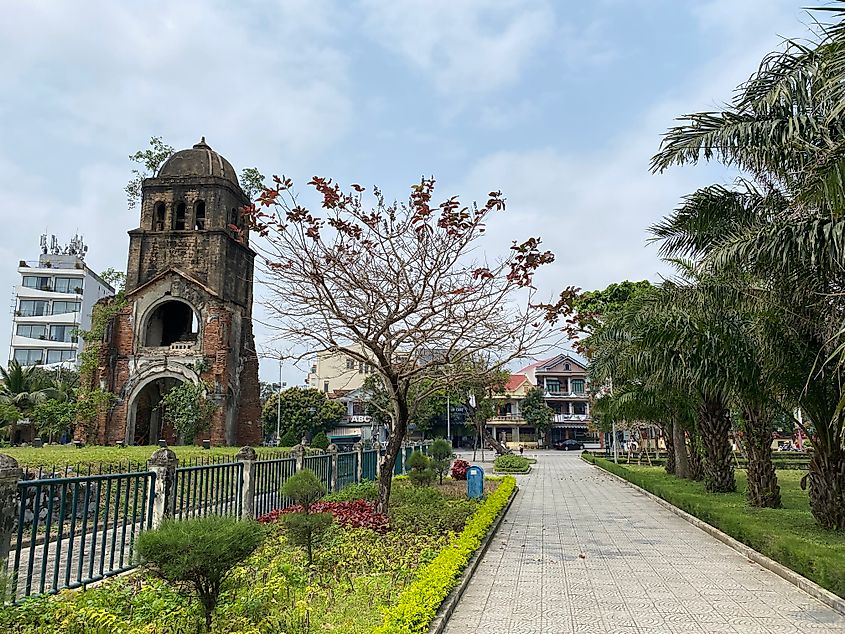
Continuing up Vietnam's coast, the understated city of Dong Hoi is connected to some serious attractions. The North-Central Vietnamese destination clearly wants to be touristy, but things haven't quite taken off yet. The unpretentious riverfront is lined with quaint parks, a well-utilized boardwalk, coffee shops, a large street market (at the south end), and a few historical landmarks. Further north, vacant beaches emerge, accompanied by unfinished hotels and strings of dormant waterfront restaurants.
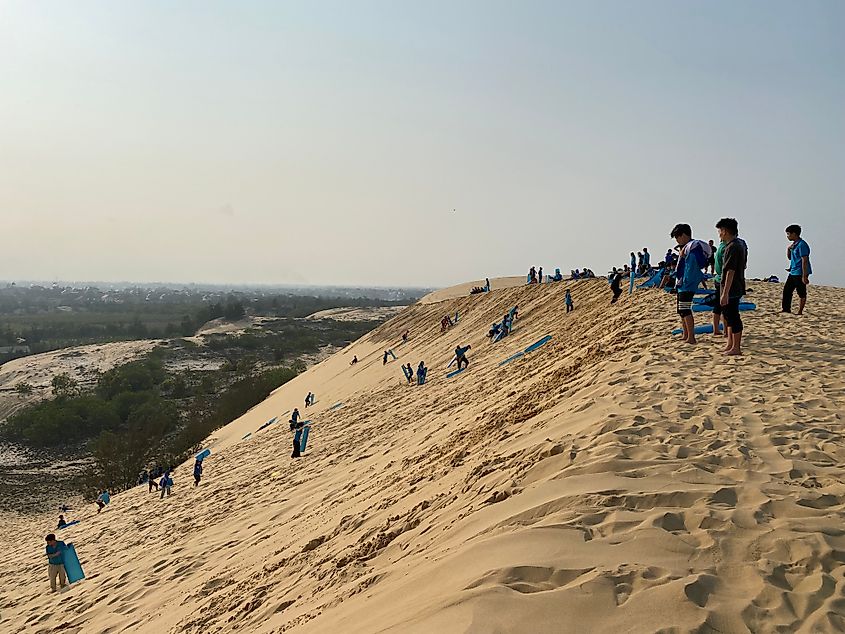
Beyond the attempted beach resorts, Dong Hoi's best local attraction emerges: the sand dunes. Electric shuttle drivers in town will take you out there for a modest fee ($10-15 USD), and even wait for you to return. Plastic toboggans are available for rent on site, and once again, cost next to nothing (roughly $1, if I remember correctly). You might think you'll pass the whole afternoon on this desertscape, but after a few slogs up those soft, steep slopes, you'll probably be gassed. I recommend going in the late afternoon so that you don't get pelted by the sun (there's no shade out there), and so you can wind down with a nice sunset.
Phong Nha and Paradise Caves
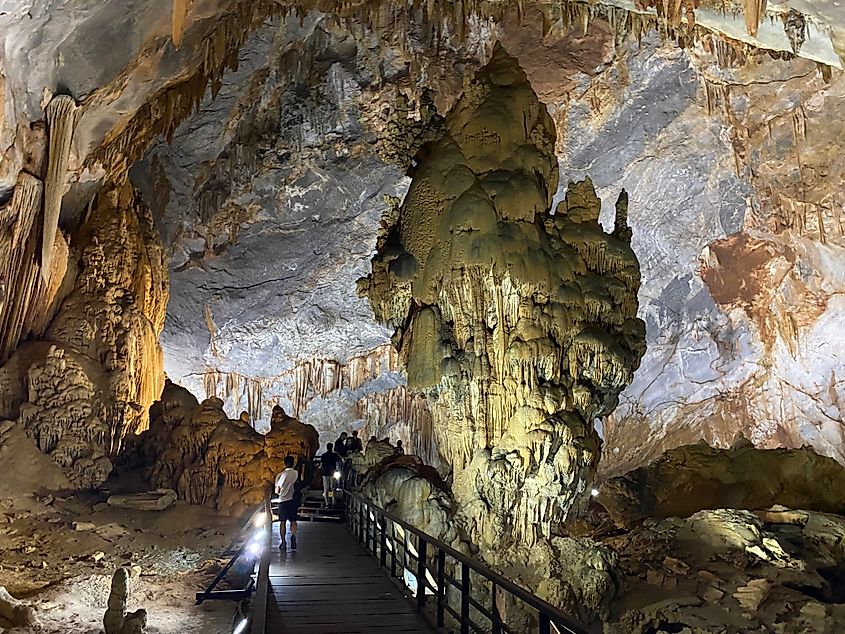
Dong Hoi makes for a nice "undiscovered" destination, but let's be honest, the real reason tourists come here is to coordinate a tour of Phong Nha - Ke Bang National Park - another of Vietnam's acclaimed UNESCO World Heritage Sites. I ended up joining a jovial group led by Phong Nha Discovery for an exploration of Paradise Cave (i.e. the longest dry cave in Vietnam), rich in alien-looking stalactites and stalagmites, and a boat ride through Phong Nha Cave - an important part of the Ho Chi Minh Trail where injured soldiers once sought refuge.
Train Interlude
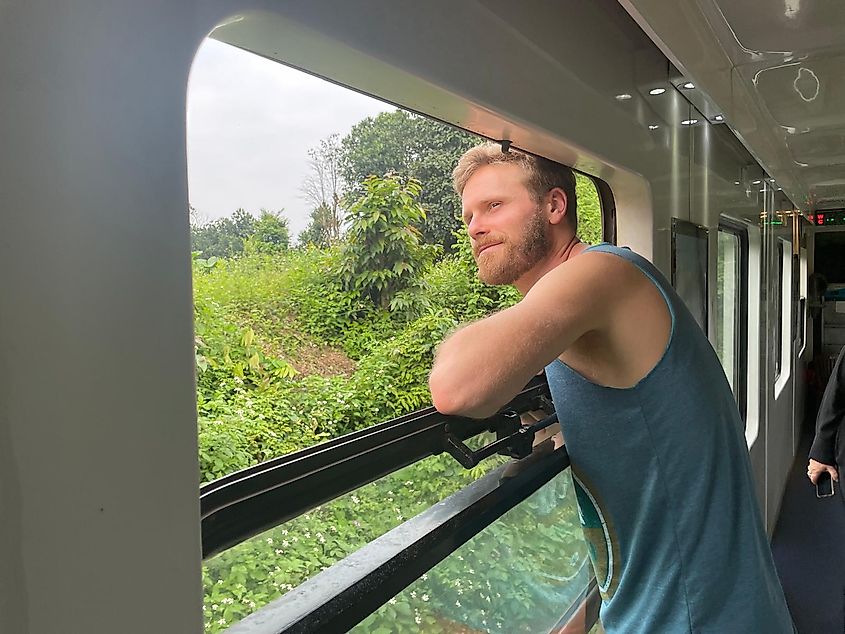
Though I've organized this article into a tight northbound itinerary, I must confess that my actual travels were not so systematic. My crew booked the Phong Nha portion long in advance and so we ended up taking the train all the way from Da Nang to Dong Hoi, then doubling back to Hue on a shuttle that included the the stopover at Vinh Moc Tunnel, and then boarded another overnight train all the way up Ninh Binh (coming up next).
Being a romantic traveler, I seek the train whenever possible. Yes, most railways tend to be slow, delayed, uncomfortable in the long run, and not necessarily any cheaper than flying. But alas, I still think it's a great way to see more of a country. Vietnam is about more than just its cities and national parks. You have to admire the farmers putting in the work day after day in those massive, bright green fields. You have to marvel at the sections of undeveloped coast, ripe for the picking if only you had more time (us backpackers always want more time). And you have to take stock of the nondescript towns that punctuate this 1,000+ mile tip-to-tail coastal railway.
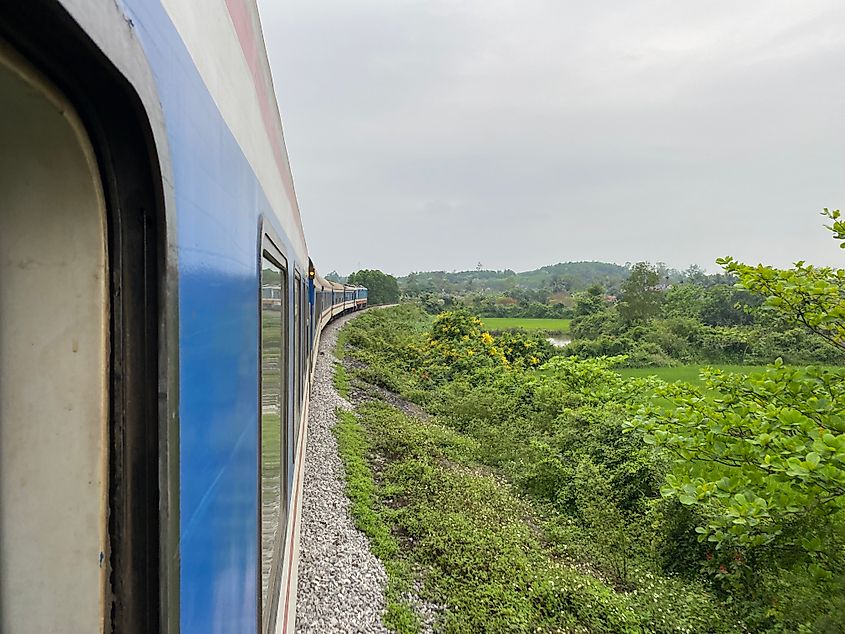
The first leg to Dong Hoi was a five-hour daytime affair - perfect for all those attributes I just mentioned. And what the overnight portion lacked in scenery, it made up for in luxury. After boarding, the attendant offered to sell us the whole cabin for half the price if we paid in cash before the next stop (when our bunkmates were apparently due to embark). Ultimately, this might have just been another run-of-the-mill Vietnam scam (something that any long-term visitor will become well acquainted with), but the guaranteed privacy (and free beer thrown in at the last second to clinch the deal) was nonetheless appreciated.
Ninh Binh
The province of Ninh Binh is known as "Ha Long Bay on Land," but as you'll see from my upcoming assessment of actual Ha Long Bay, I don't think the comparison does this landscape justice. All things considered, Ninh Binh was my favorite stop of the entire Vietnam tour. Here, well-kept World Heritage Sites, another ancient capital, a decorated mountaintop, a hidden oasis, and a series of laid-back villages made every day of this week-long stopover an engaging and rejuvenating affair. Here's a brief highlight reel.
Trang An World Heritage Site
The Trang An Landscape Complex, a UNESCO World Cultural and Natural Heritage Site, unites the towering limestone cliffs and tight cave complexes of the Red River Delta. Incredibly, evidence of hunter-gatherer populations in these parts dates back 30,000 years. All of this, plus a series of ancient temples, is on display during the half-day paddle boat tour (three different routes are available to choose from, depending on whether you want more caves, temples, or open-air nature scenes).
Hoa Lu Ancient Capital
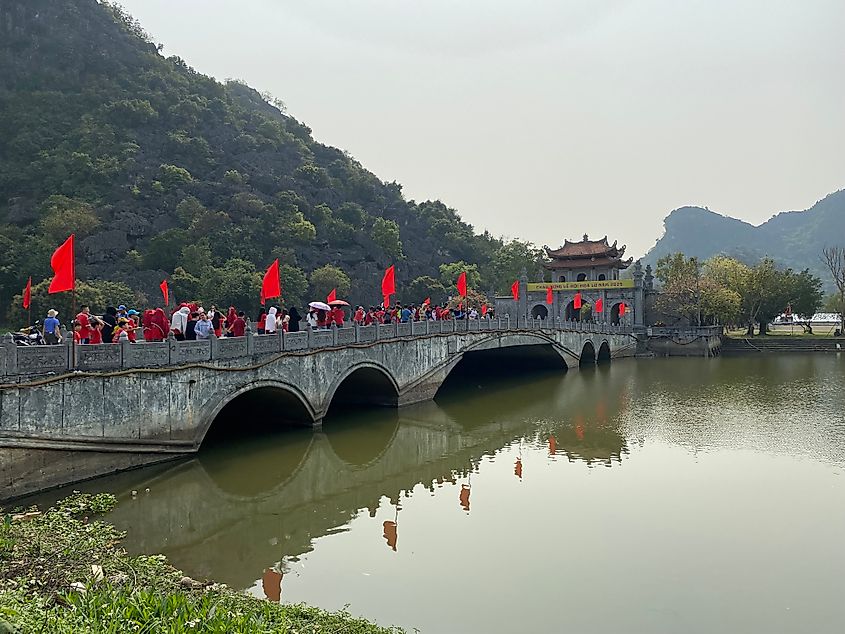
Just up the road from Trang An Village, visitors can walk through the remains of the first capital of Vietnam. Hoa Lu was the seat of the 10th and 11th century Dai Co Viet Kingdom. Though an echo of its former self, it is easy to see why this citadel once thrived in the safety of the Trang An Mountains.
Lying Dragon Mountain (Núi Ngọa Long)
Arrive early to the base of Lying Dragon Mountain, or resign yourself to a congested grunt up the 450+ irregular (and sometimes slick) stone steps. The panoramic views are well worth the strain, and as the name suggests, a sinuous dragon statue slinks along the summit as an added bonus (but sure-footed hikers only to this point!)

Tuyệt Tịnh Cốc (Động Am Tiên)
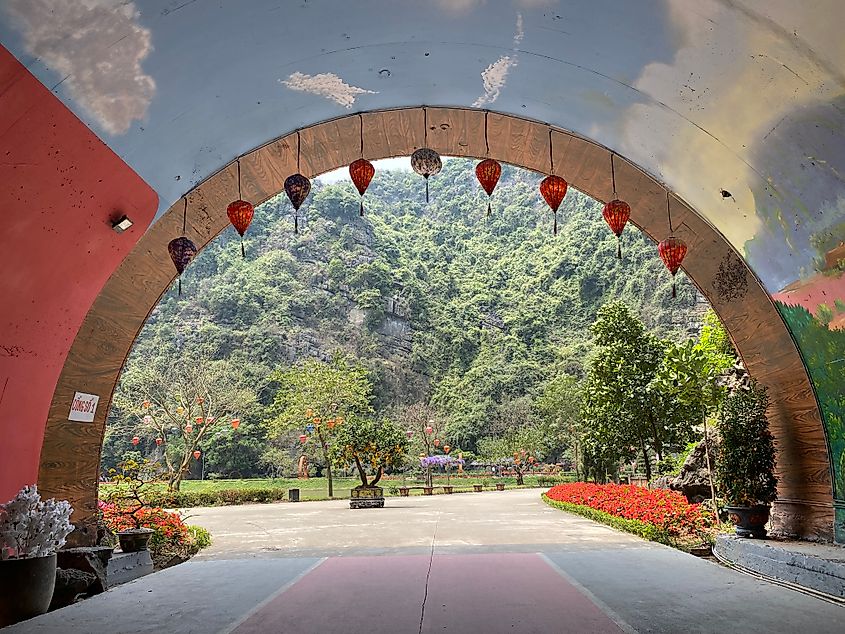
I'm a little unsure of the name, but the impact of this augmented oasis is undeniable. Just southeast of the Hoa Lu Ancient Capital, a lake is enclosed by karst walls. A wide paved path encircles the whole thing, and a Buddhist shrine stands at each end (one requires a rather persistent grunt up another flight of uneven stone steps, but is all the more rewarding for it). All the while, tranquil flute music is played through speakers, which in turn reverberate off the limestone amphitheatre. The whole haven can be reached via one of two ticketed tunnel entrances (~$2 USD).
Trang An Village
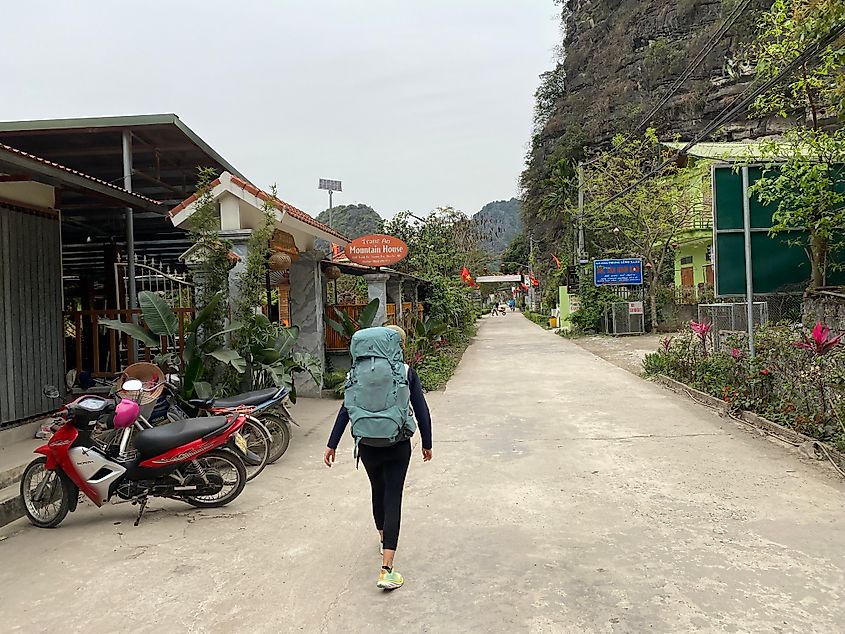
The paid attractions throughout Ninh Binh are deserving of their global recognition, but the scenic dirt roads, bungalow resorts, and a series of laid-back restaurants around Trang An Village also warrant a few days of quiet exploration.
Ha Long
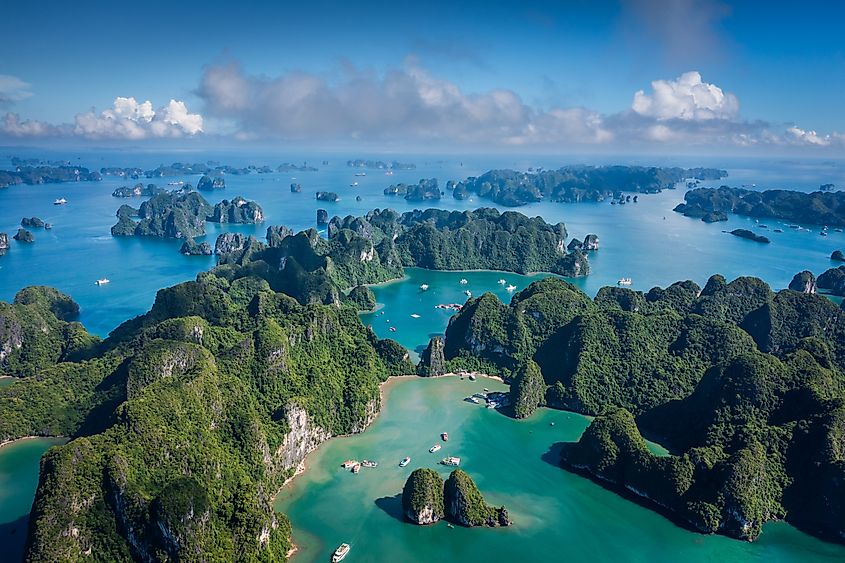
By far the biggest disappointment of this Vietnam tour was Ha Long Bay. This famous coastal region east of Hanoi is yet another UNESCO World Heritage Site, and is even considered one of the New 7 Wonders of the Natural World, yet it is sorely neglected, if not outright abused. After a chaotic shuttle ride from Ninh Binh (FYI: don't be fooled by the "limousine" branding, these companies are often late, uncomfortable, and not especially safe - check the reviews before you commit), I was itching to see the scene that has found its way onto so many desktop backgrounds over the years. I was horrified to discover a beach inundated with garbage, water thick with oily runoff, countless cruise boats blitzing around the delicate bay in an effort to maximize tourism revenue, and rusty freighters signaling that this waterway is more about industrialization than conservation. As an insult to injury, I found a dead dog stuffed into a rice sac, floating mere feet from children splashing amongst the styrofoam-ladened waters.
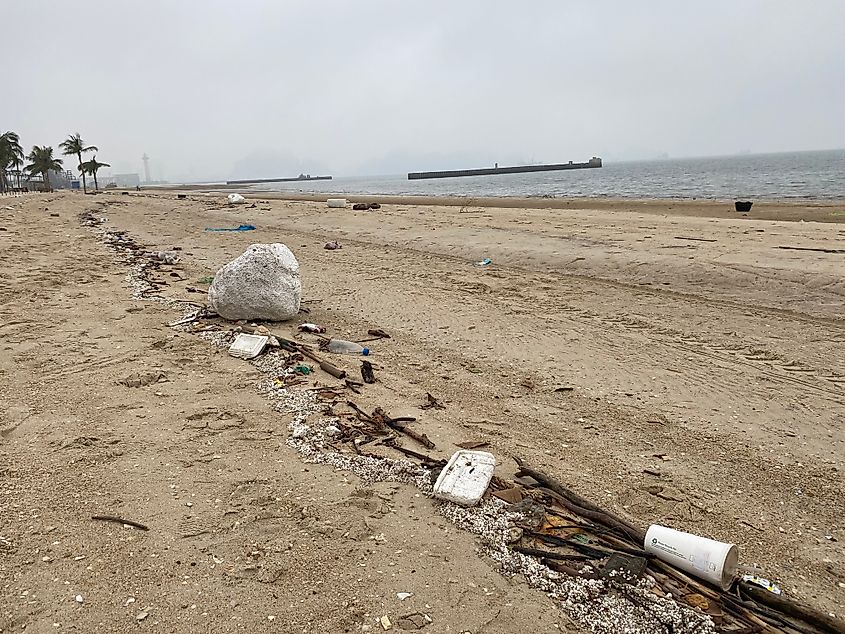
My girlfriend, Irina, and I booked four nights in Ha Long with the intention of taking the coveted day cruise. But after seeing what this place has become, we couldn't in good conscience support the reckless commercialization. I didn't want to board a boat that I knew was spewing diesel fumes, garbage, and sewage into the once pristine waters. Instead, we got some gloves and trash bags and did our best to clean up Ha Long Beach. The effort was a drop in the bucket compared to what was needed, and each shift in the tide over the coming days, unfortunately, revealed a new mile-long line of plastic in the sand. Obviously, what we were seeing on the beach was just the tip of the iceberg.
I did spot a few government workers cleaning up on the weekend, but that was clearly just to appease tourists. They simply made a few piles above the high water mark, but the few trash bins were so overstuffed that the lightweight plastic and styrofoam was simply going to blow back out again. The expired dog was my reference point for large scale removal systems. Sadly, it remained in one of those piles the entire duration of my stay.
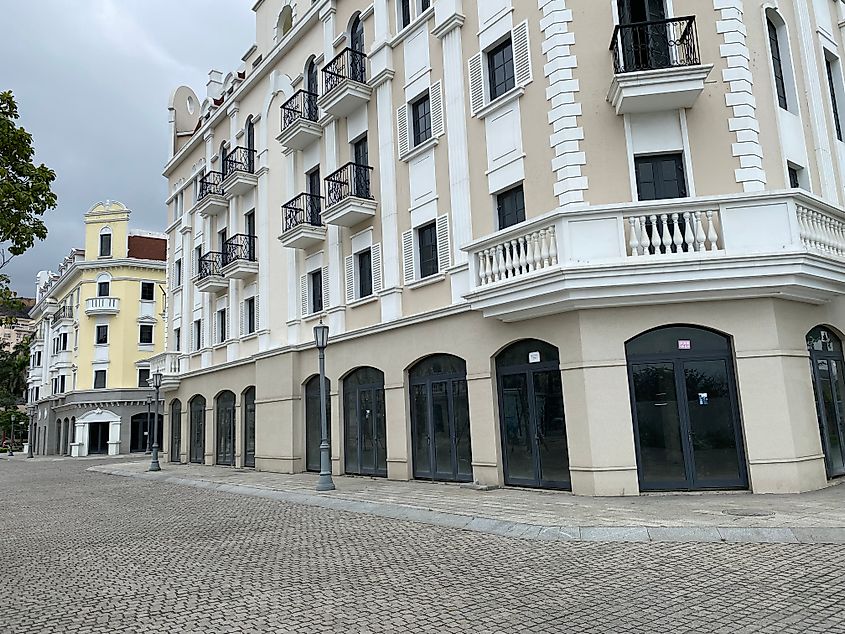
The last buzzkill was the depressing state of Ha Long City. For starters, this place is an uncanny mix of empty hotels with vacant shop spaces below them (I'm taking hundreds of such developments) that was made to look superficially like the French Riviera. The places that are properly developed are exploitative tourist traps. Everything is overpriced, and nothing is of quality. The first restaurant we went to tried to charge us 2 Million Dong for a hot pot. When we showed disinterest, the waiter immediately cut the price in half, and then just as quickly took another 200,000 off of that. Honestly, after seeing the waters that those fishing boats haul out of, I wouldn't eat the seafood here if it were free. This awkward and frustrating experience continued everywhere we went. The whole of Ha Long is about extracting what it can up front, because it knows there won't be any repeat business. End of rant.
Hanoi
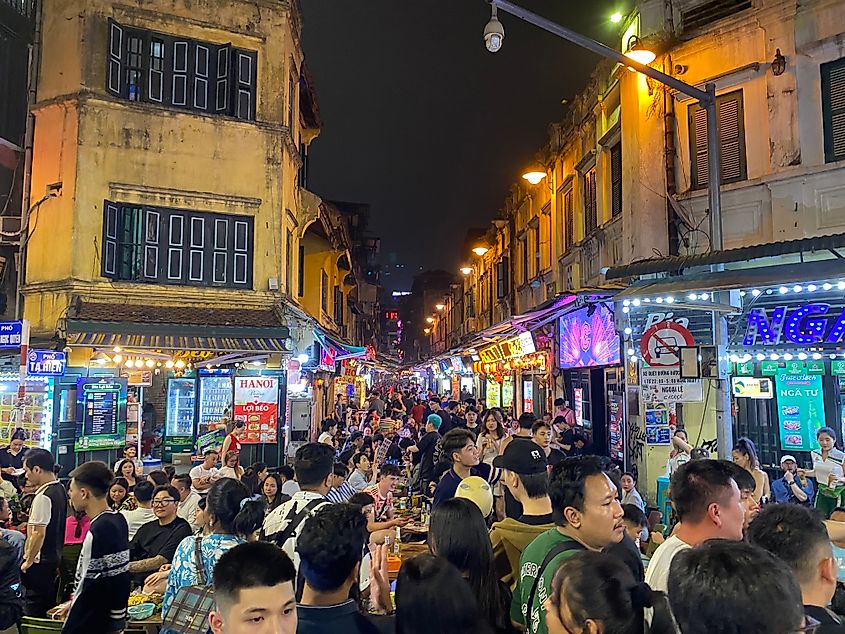
After a disastrous stay in Ha Long, Vietnam's capital city was a welcome shot in the arm. I love the chaos and culture of Asian megacities. They aren't necessarily meant for long-term habitation (five days of intense air pollution was about my max), but the energy of Hanoi's Old Quarter was exactly the send-off I needed to secure a positive impression of Vietnam.
If you find yourself in the heart of Hanoi, start by checking all the classic boxes. Spend too much money on Beer Street just for the heck of it, grab a spot on Train Street in time to feel the local locomotive whizz past mere feet from your feet, sign up for a food tour through your hostel/hotel to get a sense of Northern Vietnam's unique cuisines (everything from worm-stuffed spring rolls to deconstructed pho), and do your best to see the plethora of historical landmarks. But don't forget to leave room for random wanderings, for you never know what Hanoi will reveal. Plop down at one of the keg beer stalls to toss back 40 cent glasses washed down with plates of fresh mint, peruse shop after shop of knock-off name brand apparel (remember to bargain, it's part of the game here), and avert your gaze as you hustle by streetside eateries with rotisserie dogs in the front display.
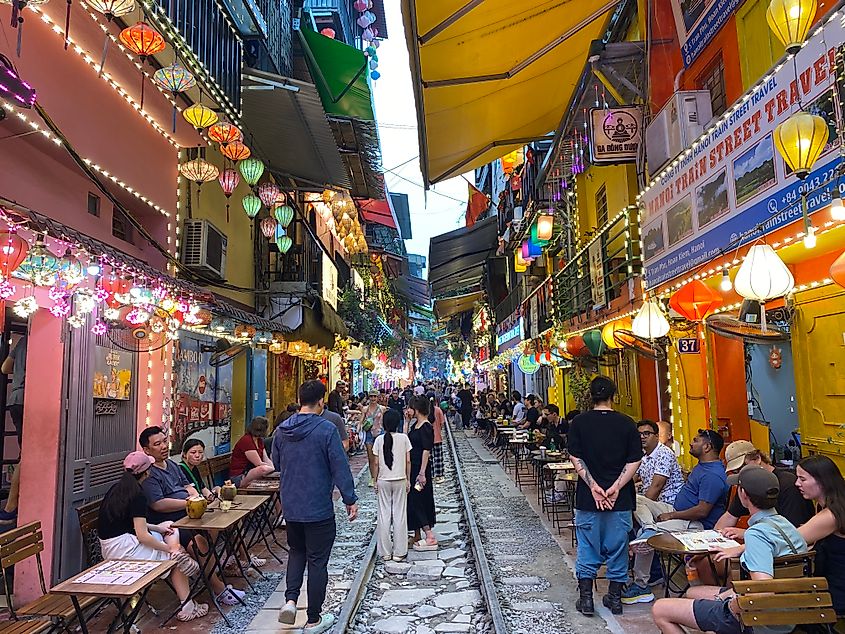
Hanoi is truly a mixed bag, and like all Southeast Asian capitals, it won't be everyone's cup of tea (or rather, egg coffee). All I can say is that I'm glad I experienced it. If you want a full-bodied, authentic Vietnam experience, then you have to witness its natural beauty, and you have to contend with its cities. Ultimately, relish the highs of a less-travelled road when they come across your plate, and be prepared for the culture-shock lows that strike unexpectedly. This is Vietnam.
